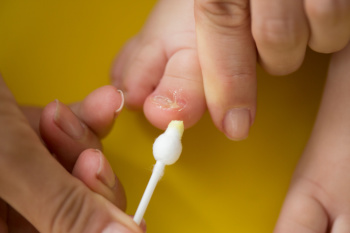Facts About Children's Ingrown Toenails

Children's ingrown toenails are a common and painful condition where the edge of the toenail grows into the surrounding skin, leading to redness, swelling, and discomfort. Several factors can contribute to this condition. Improper nail trimming, such as cutting the nails too short or rounding the edges, is a primary cause. Tight or ill-fitting shoes can also exert pressure on the toes, promoting the development of ingrown toenails. Additionally, some children have naturally curved or thick toenails that are more prone to becoming ingrown. Active children who frequently stub their toes or engage in sports may also experience this issue. Encouraging proper nail-trimming techniques and choosing appropriate footwear can significantly reduce the risk of ingrown toenails. If your child’s toenails are red or inflamed, it is strongly suggested that you confer with a chiropodist who can properly diagnose and treat this condition.
Ingrown toenails may require medical attention. If you have significant pain or notice signs of infection from an ingrown toenail, please consult with one of the specialists from Thornhill Foot Clinic. Our chiropodists will assess your condition and provide you with quality foot and ankle treatment.
What Is an Ingrown Toenail?
An ingrown toenail occurs when the edges of a toenail grow into the surrounding skin. The toenails of the big toe are usually affected, however, an ingrown toenail can happen on any toe. Sometimes, the area can become infected leading to potentially serious complications. The ingrown toenail may be caused by improper trimming of the toenail, wearing ill-fitting shoes, or injury to the nail.
Symptoms
The symptoms of an ingrown toenail include:
Pain
Swelling
Redness
Warmth
Pus or drainage from the affected nail or a fever may indicate an infection of the area.
Treatment
Treatment depends on the severity of the ingrown toenail. In less severe cases, home treatment may be adequate. Soaking the affected foot in warm water and gently lifting the nail from the skin with a piece of clean cotton can help. In more severe cases, you may need to use topical or oral antibiotics to treat an infection. Surgical removal of the ingrown toenail may be required if more conservative treatments fail.
Ingrown toenails may be prevented by wearing well-fitted shoes and properly trimming the toenails. Toenails should be trimmed straight across and not too short when using nail clippers.
If you have any questions, please feel free to contact our office located in . We offer the newest diagnostic and treatment technologies for all your foot care needs.
